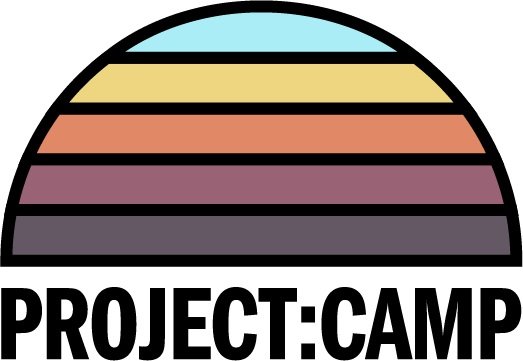Resilience Spiral
Not everyone who is exposed to toxic stress (a car accident, a wildfire, a dog bite) develops life-long trauma as a result. The Resilience Spiral is engineered to help disrupt the formation of long-term trauma by cycling between three phases: establishing safety, narrative & processing, and reconnection. The spiral acts as a guide for programming in the long (a camp session) or short (a day or even a single program) term. Establishing Safety can be as simple as saying “this is a safe space to explore and play.” Narrative & Processing includes activities that help make sense of what happened and helps kids understand that they aren’t defined by the event (you’re currently evacuated, but you aren’t forever an evacuee). And reconnection builds bridges between the current experience to other parts of our lives, and models the importance of community big and small.
How to use it at camp:
Implement with your Program Director
Training all staff to connect each activity to a phase of the spiral
Organizing the arc of the day - establish safety in the morning, narrative & processing activities in the afternoons, and reconnect at the end of the day.
Gratitude Circle
When times are hard and stress is high, it can be deeply meaningful and impactful to take a moment to reflect on what is going well, and how many wonderful things are still at play in your life. A gratitude Circle is just that - a structured moment where all participants sit in a circle, then go around one at a time to say one thing they’re grateful for. While each story may be brief, the drumbeat of gratitude brings a wave of optimism, humility and calm. Be sure not to force anything, it’s totally ok if someone wants to skip, but especially if adults have been talking over or past kids, it’s important that everyone has a chance to speak and to be heard. A circle of peers looking at you and quietly listening to what you have to say brings a sense of agency and importance that can bolster confidence and disrupt long-term trauma.
How to use it at camp:
Opening day cabin bonding
Rest hour / before bed in cabins
Quiet moments of cabin time (destination of a hike, on the beach, at a campfire)
Mental & Emotional (ME) Check
ME Checks are a quick, simple and effective way to take a step back to assess how you’re feeling. A ME Check is nothing more than a 1-to-10 scale to assess how relaxed or how stressed you are feeling. A 1 is super relaxed, and usually you physically feel loose and relaxed. A 10 is all amped up: fight-or-flight mode either caused by stress, excitement, or an emotion you can’t even name because you can’t think straight. When someone is a 10, they often look tense, balled up, tight, or overwhelmed. Project:Camp does ME Checks daily in opening circles, closing circles and lunch. We use ME Checks to track how kids are feeling throughout the day, but also as a way of talking to kids one on one and addressing behavior problems. If a camper is having trouble, sometimes asking for a ME Check helps her identify that she’s feeling stressed, and helps her talk through what might help her calm down.
How to use it at camp:
Bookends of the day (wake up/lights out)
Transition between activities
One-on-one conversations with campers
Calming campers down after a big moment / event
